26th August, 2025
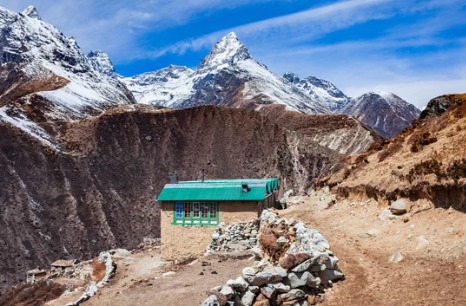
Jun 26, 2024
Lobuche Peak Climbing In June
- Conquering Lobuche Peak in the Summer Season
- Welcome to Lobuche Peak Climbing: A Challenging Adventure
- Introducing Lobuche Peak: Geography, Elevation, and Climbing Routes
- Why Climb Lobuche Peak in June? Advantages and Challenges
- Physical Conditioning for High-Altitude Climbing in Summer
- Essential Gear and Equipment for Lobuche Peak Climbing in June
- Obtaining Permits and Arranging Logistics for the Summer Season
- Lukla to Phakding: The First Steps on the Everest Trail in June
- Namche Bazaar to Tengboche: Acclimatization and Scenic Views in Summer
- Tengboche to Dingboche: The Trail to the Base of Lobuche East in June
- Establishing Base Camp and Preparing for the Ascent in Summer Conditions
- The Climb to High Camp (5,400m/17,716ft) via the West Ridge Route
- Summit Day: Overcoming Monsoon Challenges and Reaching the Top
- Crossing the Glacier to Lobuche West Base Camp in June
- The Ascent of Lobuche West (6,145m/20,161ft) via the South Ridge Route
- Understanding Monsoon Weather Patterns and Their Impact on the Climb
- Managing Rain, Snow, and Avalanche Risks in June
- Building a Strong Team for a Successful Climb in Challenging Conditions
- Effective Communication and Decision-Making on the Mountain during Monsoon Season
- Reflections on a Successful Climb: Lessons Learned from Conquering Lobuche Peak in June
- Lobuche Peak Climbing Packages
Climbing Lobuche Peak in June presents both opportunities and challenges that make it a unique adventure in the Himalayas. Situated in the Khumbu region of Nepal, Lobuche Peak stands at 6,145 meters (20,161 feet) and is a popular choice among climbers seeking a challenging yet rewarding experience.
June marks the beginning of the monsoon season in Nepal, characterized by warmer temperatures and increased precipitation. While the weather can be more unpredictable during this time, June offers certain advantages for climbers. The trails are generally less crowded compared to the peak trekking seasons of spring and autumn, providing a quieter and more serene experience amidst the stunning landscapes of the Everest region.
One of the primary challenges climbers face in June is the weather. The monsoon brings occasional rain showers and cloud cover, which can obscure mountain views and make climbing conditions more challenging. It's crucial for climbers to stay updated with weather forecasts and be prepared for sudden changes in weather patterns.
Despite the weather risks, June can be an ideal time for climbers who are well-prepared and seek a quieter trekking experience. The lush greenery and blooming rhododendrons add a vibrant backdrop to the trek, offering unique photographic opportunities along the trail.
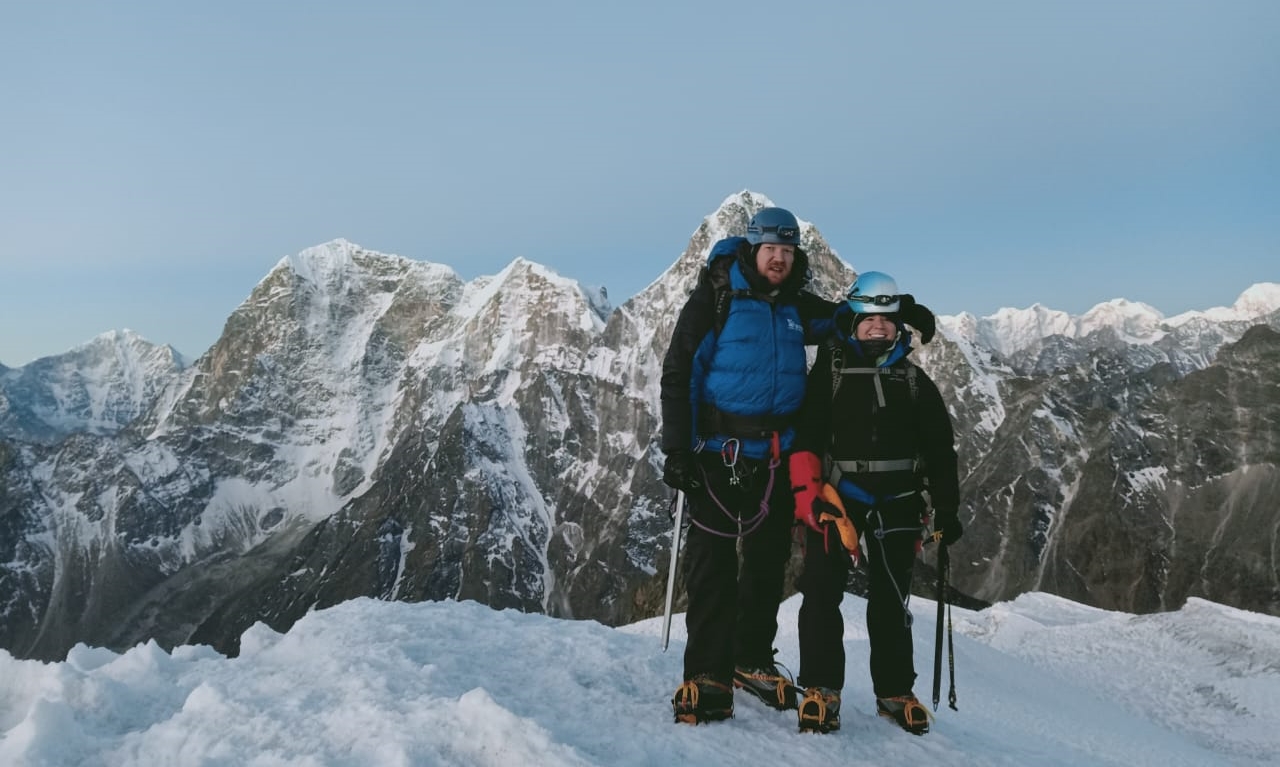
LOBUCHE PEAK CLIMBING
Lobuche East (6,119m/20,075ft), set in Nepal's stunning Khumbu on the Nepalese side of Everest.The best time to go trekking in Nepal is in Autumn (September-November) and in...
Acclimatization is key to a successful climb in June. Climbers typically follow an itinerary that includes gradual ascents and rest days to acclimate to the altitude and reduce the risk of altitude sickness. Experienced Sherpa guides play a crucial role in guiding climbers safely and managing logistical challenges.
For those attempting Lobuche Peak in June, physical fitness is essential. The ascent involves technical sections requiring proficiency in basic mountaineering skills such as using ropes, crampons, and ice axes. Climbers should be prepared for steep ascents and challenging terrain, including glacier crossings and crevasse navigation.
Ultimately, climbing Lobuche Peak in June offers a unique blend of adventure, natural beauty, and cultural immersion in the Everest region. It's a journey that rewards climbers with breathtaking views, personal achievement, and memories of a lifetime amidst the awe-inspiring landscapes of the Himalayas.
Conquering Lobuche Peak in the Summer Season
Climbing Lobuche Peak during the summer season, particularly in June, offers a unique mountaineering challenge in the Everest region of Nepal. At an elevation of 6,145 meters (20,161 feet), Lobuche Peak is renowned for its technical ascent and stunning panoramic views of the surrounding Himalayan peaks. Summer brings warmer temperatures and the onset of the monsoon season, affecting climbing conditions with increased precipitation and occasional cloud cover. Despite these challenges, climbers can enjoy quieter trails and lush green landscapes along the route.

LOBUCHE PEAK SUMMIT RETURN BY HELICOPTER
A real climbing adventure that will leave you stunned at the beauty of the Himalayan Mountains. The Lobuche Peak Climbing expedition in the spectacular Khumbu region of Nepal has been ranked by Lonely...
Welcome to Lobuche Peak Climbing: A Challenging Adventure
Embarking on a journey to climb Lobuche Peak is a thrilling adventure that combines physical endurance with technical mountaineering skills. Located in the Khumbu region, the peak offers a challenging ascent suitable for experienced climbers seeking to summit a Himalayan peak. Climbers can expect steep terrain, glacier crossings, and sections requiring the use of ropes and crampons. The journey also provides cultural immersion with interactions with Sherpa communities and insights into local mountain life.
Introducing Lobuche Peak: Geography, Elevation, and Climbing Routes
Lobuche Peak stands prominently at an elevation of 6,145 meters (20,161 feet) in the Everest region of Nepal. It comprises two main summits: Lobuche East and Lobuche West. Climbers typically ascend Lobuche East, known for its technically demanding climb and breathtaking views of Everest, Lhotse, Nuptse, and other Himalayan giants. The climbing route to Lobuche Peak involves navigating through rugged terrain, crossing glaciers, and ascending steep slopes, requiring climbers to be well-equipped and physically prepared for the challenge.
Why Climb Lobuche Peak in June? Advantages and Challenges
Climbing Lobuche Peak in June offers both advantages and challenges. Advantages include fewer crowds on the trails compared to peak seasons, providing a quieter and more intimate climbing experience. The summer months also bring lush green landscapes and blooming rhododendrons along the trekking route, enhancing the scenic beauty of the journey. However, climbers must contend with the onset of the monsoon season, bringing increased precipitation, cloud cover, and occasionally unpredictable weather conditions that can affect visibility and climbing safety.
Physical Conditioning for High-Altitude Climbing in Summer
Preparing for high-altitude climbing in summer requires rigorous physical conditioning. Climbers should focus on cardiovascular endurance, strength training, and altitude acclimatization. Training should include hiking with a loaded pack, endurance exercises, and simulated altitude training if possible. Building leg strength and stamina is crucial for navigating steep ascents and rugged terrain. Proper hydration and nutrition are also vital components of physical preparation, ensuring climbers maintain energy levels and recover effectively during the demanding ascent of Lobuche Peak.
These topics provide a comprehensive overview of climbing Lobuche Peak in the summer season, highlighting its challenges, rewards, and essential preparations for a successful ascent.

LOBUCHE PEAK EXPEDITION 14 DAYS
The Lobuche Peak Expedition is a 14-day trekking adventure that takes you to the heart of the Khumbu region in Nepal. It is a popular trekking peak in the Himalayas, with stunning views of the surroun...
Essential Gear and Equipment for Lobuche Peak Climbing in June
Climbing Lobuche Peak in June requires specific gear tailored to the challenges of high-altitude mountaineering and the variable weather conditions of the monsoon season. Essential gear includes:
- Clothing: Layered clothing for warmth and moisture management, waterproof and windproof outer layers, insulated jacket, gloves, and a warm hat.
- Footwear: Sturdy hiking boots with good ankle support, crampon-compatible for glacier travel, and gaiters to keep snow out.
- Climbing Equipment: Helmet, harness, ropes, ice axe, and crampons suitable for glacier crossings and steep ascents.
- Safety Gear: Avalanche transceiver, probe, and shovel for avalanche-prone areas.
- Navigation Tools: GPS device, map, and compass for route finding, especially in cloudy or low-visibility conditions.
- Sleeping Gear: Four-season sleeping bag rated for cold temperatures and a sleeping pad for insulation from the ground.
- Personal Items: Sunglasses with UV protection, sunscreen with high SPF, lip balm with SPF, and a headlamp with extra batteries.
- First Aid Kit: Including medications for altitude sickness, pain relief, and basic wound care supplies.
Obtaining Permits and Arranging Logistics for the Summer Season
Before climbing Lobuche Peak, climbers must obtain permits from the Nepal Mountaineering Association (NMA). Permits typically include climbing fees, national park fees, and insurance. It's advisable to arrange permits well in advance to ensure availability and avoid delays.
Logistics include organizing transportation to and from Kathmandu to Lukla, the starting point of the trek. Hiring a local trekking agency can assist with permits, logistics, hiring Sherpa guides, and porters. It's crucial to confirm accommodation bookings in advance, especially during the peak trekking season.

ISLAND PEAK CLIMBING
Sherpa Expedition & Trekking (Est.1977) are pleased to announce FOR ADVENTURERS the most awesome, exhilarating & unforgettable climbing and treks on offer anywhere today!...
Lukla to Phakding: The First Steps on the Everest Trail in June
The journey from Lukla to Phakding in June begins with a thrilling flight from Kathmandu to Lukla Airport, known for its short runway and stunning views of the Himalayas. From Lukla, climbers trek downhill to Phakding through picturesque Sherpa villages and along the Dudh Koshi River. The trail offers glimpses of prayer flags, mani walls, and suspension bridges adorned with prayer flags.
In June, climbers experience lush green landscapes dotted with blooming rhododendrons and wildflowers, adding color to the journey. Climbers should maintain a steady pace to acclimatize gradually to the altitude and enjoy the scenic views along the trail.
Namche Bazaar to Tengboche: Acclimatization and Scenic Views in Summer
From Namche Bazaar, climbers continue their ascent towards Tengboche, passing through dense forests of pine and rhododendron. Namche Bazaar, a bustling Sherpa town, offers a rest day for acclimatization and exploration of local markets and monasteries. Climbers can visit the Hillary School and the Everest View Hotel for panoramic views of Everest and surrounding peaks.
The trail to Tengboche provides stunning vistas of Ama Dablam and Everest, making it a photographer's delight. June's warmer temperatures and occasional rain showers require waterproof gear and protection from the sun. Climbers should stay hydrated and pace themselves to maintain energy levels during the ascent.
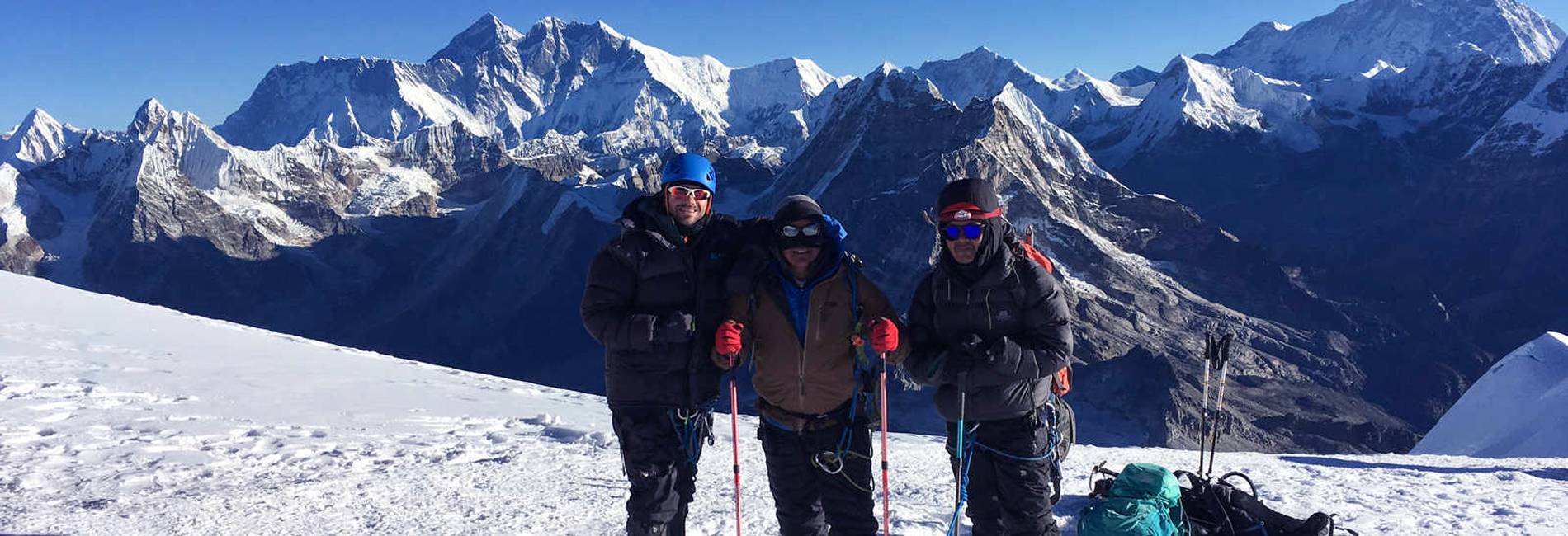
MERA PEAK CLIMBING
Mera Peak Climbing is an exhilarating adventure in Nepal that gives you an opportunity to reach the summit of Mera Peak at more than 6400m above sea level. Actually, it is the highest climbing (w...
Tengboche to Dingboche: The Trail to the Base of Lobuche East in June
The trek from Tengboche to Dingboche in June involves crossing the Imja Khola River and ascending through open landscapes with views of Pangboche village and its ancient monastery. Dingboche, situated at an altitude of around 4,410 meters (14,468 feet), serves as a crucial acclimatization stop before climbing Lobuche Peak.
In June, Dingboche offers panoramic views of Island Peak and Lhotse. Climbers may experience occasional rain showers and cooler temperatures, requiring layered clothing and waterproof gear. It's essential to rest and hydrate adequately in Dingboche to prepare for the challenging ascent to Lobuche East Base Camp.
These topics provide essential information on gear, permits, logistics, and the trekking experience from Lukla to Dingboche on the way to Lobuche Peak in June.
Establishing Base Camp and Preparing for the Ascent in Summer Conditions
Establishing base camp for Lobuche West climbing in June is a crucial step in acclimatization and preparation. Base camp is typically set up in a strategic location that offers safety and access to water sources. Climbers acclimatize here, adjusting to the altitude and preparing for the challenging ascent ahead. Base camp serves as a hub for organizing equipment, restocking supplies, and planning the route to higher camps. In June, climbers must be prepared for monsoon conditions, including occasional rain and lower temperatures at night. Adequate tent setup and securing equipment against wind and rain are essential to ensure a comfortable stay and maintain readiness for the climb.
The Climb to High Camp (5,400m/17,716ft) via the West Ridge Route
The climb to high camp at 5,400 meters via the West Ridge Route is a significant milestone in the Lobuche West expedition. From base camp, climbers ascend steadily, navigating rocky terrain and occasional snow patches. The West Ridge Route offers stunning views of the surrounding Himalayan peaks, motivating climbers despite the challenging conditions. In June, climbers face monsoon challenges such as unpredictable weather, including fog and rain showers. It's crucial to use proper climbing techniques, including rope management and secure footing, to safely reach high camp. Adequate hydration, nutrition, and rest breaks help maintain energy levels and combat altitude effects. High camp provides a strategic position for the final ascent push and serves as a pivotal acclimatization point before the summit bid.
Summit Day: Overcoming Monsoon Challenges and Reaching the Top
Summit day on Lobuche West involves an early morning start from high camp, typically before dawn, to optimize weather conditions and visibility. Climbers tackle steep sections and negotiate crevasses while navigating the South Ridge Route towards the summit at 6,145 meters. In June, climbers must contend with monsoon challenges such as increased snow accumulation, potential avalanche risk, and lower temperatures. Proper equipment, including crampons and ice axes, is essential for safe ascent and descent. Climbers maintain focus and pace themselves, conserving energy for the final push to the summit. Upon reaching the summit, climbers are rewarded with breathtaking panoramic views of Everest, Lhotse, and Nuptse, making the challenging ascent worthwhile.

YALA PEAK CLIMBING
Don’t let the height frighten you (5520m). This is a non-technical climb that will afford views for miles and miles in the Langtang region of Nepal. From the summit, you can see Mt. Sishapangma...
Crossing the Glacier to Lobuche West Base Camp in June
Crossing the glacier to Lobuche West base camp in June requires careful navigation and coordination. Climbers traverse icy terrain and negotiate crevasses while roped together for safety. Glacier travel demands concentration and teamwork to identify safe routes and avoid hazards. In June, melting snow and unpredictable weather add complexity to the crossing, requiring flexibility in planning and route adjustments. Climbers rely on navigation tools such as GPS and maps to maintain course and reach base camp safely. Adequate rest and hydration during breaks are crucial to managing fatigue and maintaining focus during the crossing.
The Ascent of Lobuche West (6,145m/20,161ft) via the South Ridge Route
The ascent of Lobuche West via the South Ridge Route in June is a challenging yet exhilarating climb. From base camp, climbers ascend through rocky terrain and traverse snow slopes towards the summit at 6,145 meters. The South Ridge Route offers technical climbing sections, including steep pitches and exposed ridges, requiring climbers to use their mountaineering skills effectively. In June, climbers face monsoon conditions such as frequent cloud cover and occasional precipitation. Climbers must assess weather conditions carefully and make informed decisions regarding ascent timing and safety. Summiting Lobuche West via the South Ridge Route in June requires determination, physical endurance, and adherence to safety protocols. Successful climbers are rewarded with unparalleled views of the Everest region and a profound sense of accomplishment.
These topics provide a comprehensive overview of the key stages and challenges involved in climbing Lobuche West during the summer season.
Understanding Monsoon Weather Patterns and Their Impact on the Climb
Monsoon weather patterns significantly impact climbing conditions on Lobuche Peak in June. The monsoon season in the Himalayas brings heavy rainfall, cloud cover, and lower temperatures, posing challenges to climbers. Rainfall can lead to slippery trails and increased rockfall risk, while cloud cover reduces visibility, making navigation more challenging. Climbers must monitor weather forecasts closely and plan climbs during windows of improved weather conditions. Understanding monsoon weather patterns helps climbers prepare mentally and physically for the unpredictable conditions they may encounter during the ascent.

BARUNTSE EXPEDITION
This is a true expedition to a less climbed, but amazingly beautiful mountain. Serious mountaineers will see Baruntse Peak (7129m/23,389ft) as another addition to their climbing logbook - despite the...
Managing Rain, Snow, and Avalanche Risks in June
Managing rain, snow, and avalanche risks is crucial for safety during the June climb on Lobuche Peak. The onset of the monsoon season brings frequent rain showers and occasional snowfall to higher elevations, increasing the risk of avalanches on steep slopes and snow-covered terrain. Climbers must assess avalanche conditions and avoid high-risk areas during unstable weather periods. Proper equipment, including avalanche beacons, probes, and shovels, is essential for avalanche preparedness. Climbers should also practice safe route-finding techniques and travel in smaller groups to minimize risk. Vigilance and proactive risk management strategies are key to navigating safely through changing weather conditions on Lobuche Peak in June.
Building a Strong Team for a Successful Climb in Challenging Conditions
Building a strong team is essential for a successful climb on Lobuche Peak during the challenging monsoon conditions of June. A cohesive team shares responsibilities, supports each other during difficult moments, and collaborates on decision-making. Each team member brings unique skills and experiences that contribute to the group's overall success. Effective communication and mutual trust foster teamwork and enhance safety on the mountain. Team leaders should prioritize team dynamics and ensure that all members are adequately prepared physically and mentally for the climb. Building a strong team creates a supportive environment where climbers can overcome challenges together and celebrate achievements as a unified group.
Effective Communication and Decision-Making on the Mountain during Monsoon Season
Effective communication and decision-making are critical for navigating the monsoon season challenges on Lobuche Peak. Clear communication within the climbing team ensures that everyone is informed about route conditions, weather updates, and safety protocols. During monsoon weather, rapid changes in conditions require swift decision-making based on the latest information available. Climbers must assess risks, evaluate alternatives, and make decisions collectively to prioritize safety and summit success. Effective communication channels, such as radios or satellite phones, facilitate real-time updates and coordination between team members and support personnel. Decisive leadership and open dialogue empower climbers to respond effectively to unforeseen challenges and make informed decisions during the climb.
Reflections on a Successful Climb: Lessons Learned from Conquering Lobuche Peak in June
Reflections on a successful climb provide valuable insights and lessons learned from conquering Lobuche Peak in June. Climbers reflect on their experiences, challenges overcome, and moments of achievement during the ascent. Evaluating decision-making processes, teamwork dynamics, and personal resilience enhances learning and growth for future expeditions. Reflecting on the impact of monsoon weather patterns, risk management strategies, and communication effectiveness fosters continuous improvement in climbing skills and mountain safety practices. Celebrating successes and acknowledging areas for improvement contribute to a deeper understanding of the climb's significance and personal growth as a mountaineer.
These topics offer a comprehensive overview of managing monsoon weather challenges, building team dynamics, and reflecting on the experience of climbing Lobuche Peak in June.
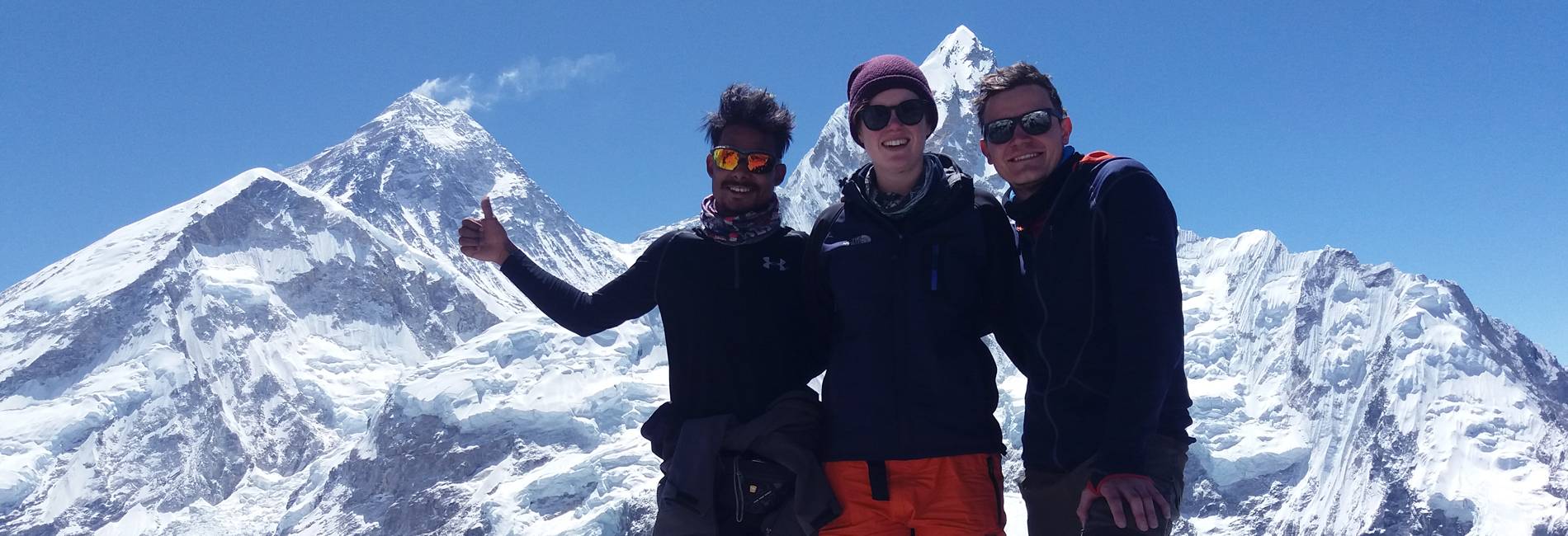
EVEREST BASE CAMP TREK
Cross this off your “bucket list” – a “dream come true experience”Everest is the ultimate goal of many people and those who had already been there rating it as one of the best experiences of their liv...
Lobuche Peak Climbing Packages
Lobuche Peak Summit Return By Helicopter
Lobuche Peak Expedition 14 Days
Lobuche Peak Expedition 15 Days
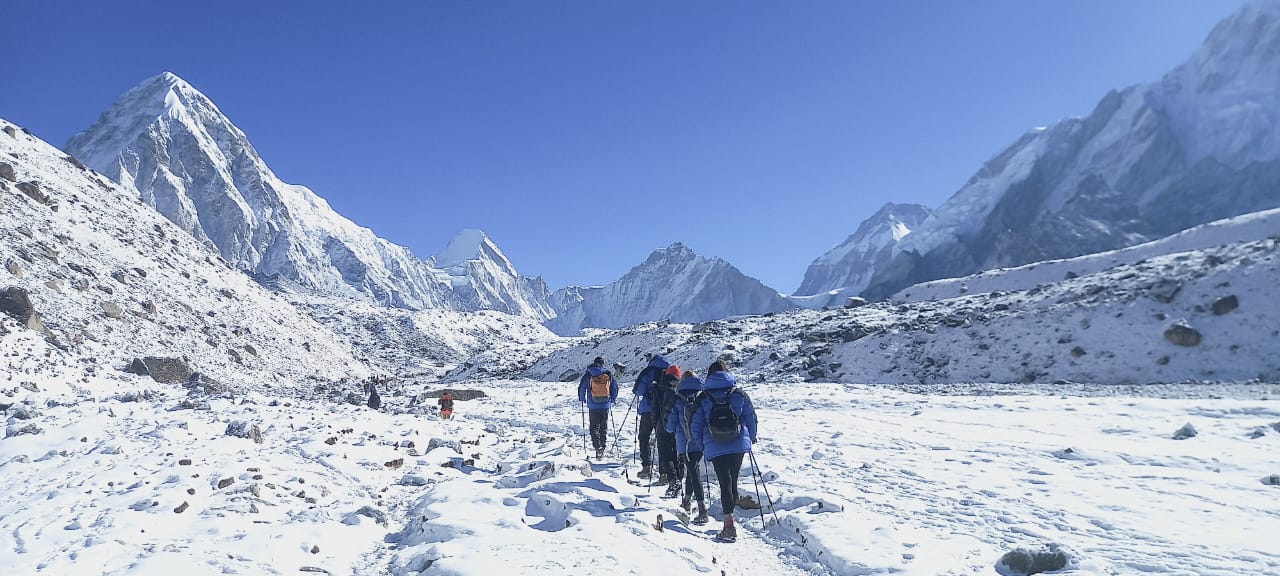
MERA AND ISLAND PEAK CLIMBING
Embark on a thrilling mountaineering adventure like no other with the Mera and Island Peak Climbing expedition crafted by We Sherpa Expedition and Trekking. This exclusive package is designed for adve...
Any Questions? Let Us Know.
Recent Posts
17th June, 2025


















